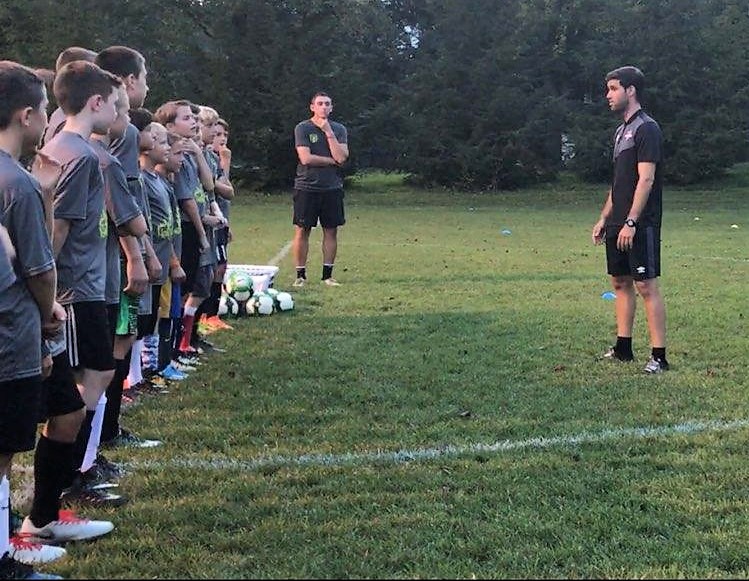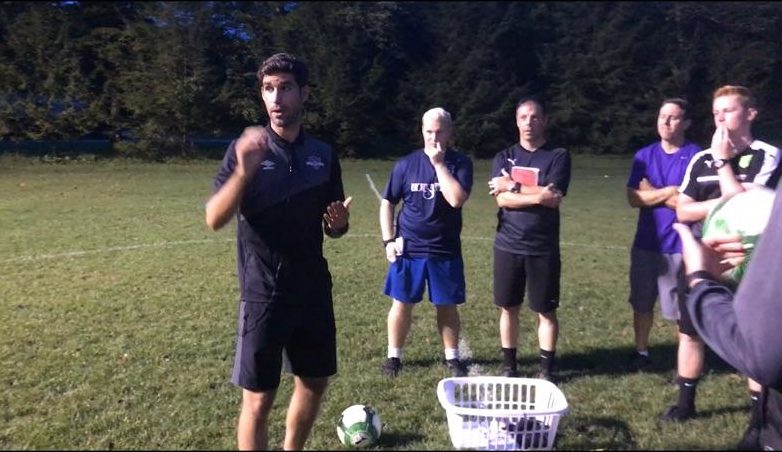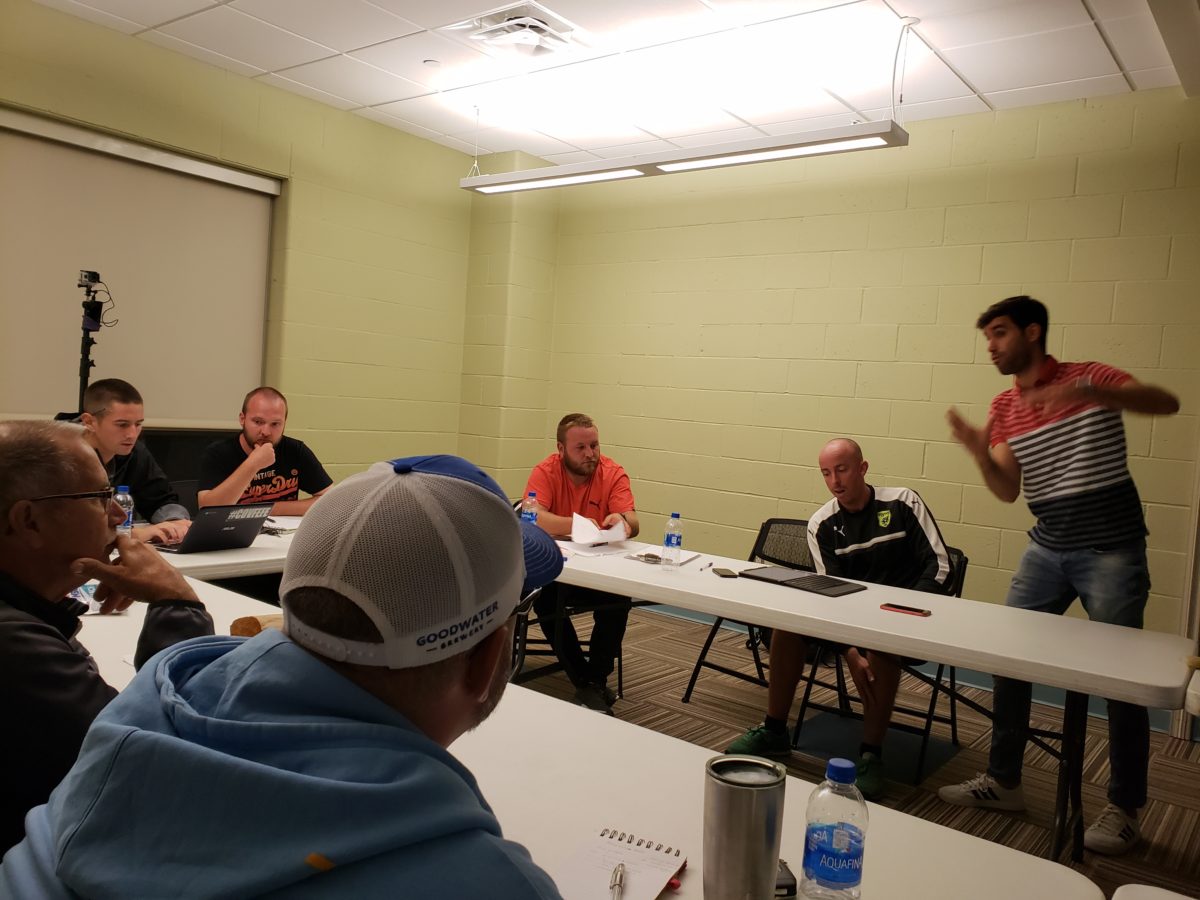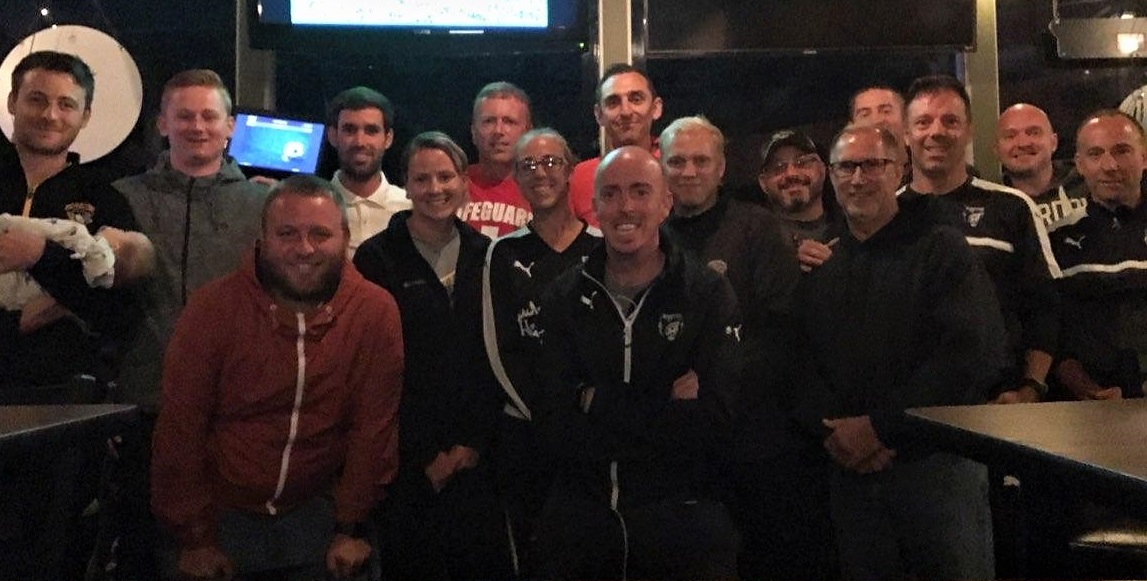World-Class Coach Spends Motivational Weekend with Hotspurs Coaches
The “year of education” is a phrase you’ll hopefully not soon tire of. It’s one of high importance to our entire coaching team, and we’ve taken a big step in education by spending 3 days with world-class soccer coach Eric Tenllado Ortega.
It’s important to us that our players, families, and interested fans of the game know about the growth and direction of our club as we continue to develop our identity and style in Pittsburgh. Here’s everything you need to know about our weekend with a world-class coach:
How it began…
Our DOC, Tommo, is a fan of Twitter. He connects and engages with coaches all around the world. Eric, whom Tommo christened ‘The King of Twitter’ engaged with Tommo after he sought to get more input on a few of Eric’s tweets. One thing led to another and Tommo invited Eric to the beautiful city of Pittsburgh to do what he loves — coaching education with the Hotspurs coaching staff.
But WHO is Eric?
Eric Tenllado Ortega is a 28-year-old Spanish national who grew up in the city of Barcelona.
Like the vast majority of kids growing up in that part of the world, Eric aspired to be a professional footballer. Unfortunately, injuries at an early age prevented Eric from achieving a sustainable playing career. However, as a U16 when the coach of his younger brothers team invited him to help out at practice before his own training, Eric set out on his own coaching journey.
Eric possesses a degree in Sport Sciences and holds a UEFA Pro license which qualifies him to manage any team in the world.
However, Eric’s passion remains in the youth game and coach education. He has coached with La Liga Club, RCD Espanyol as a youth coach and is currently with Canada’s largest soccer club — Toronto High Park FC serving as their Coach Development Manager and an academy coach.
What did we learn…
The focus of Eric’s visit was to go over positional play, periodization, and the counter-press. Here’s the 101 of each:
Principles of Positional Play
 One of the main principles of positional play is the necessity to ‘build’ an attack, i.e., to facilitate the conditions for counter-pressing. This is already a concept we’ve been instilling into our players.
One of the main principles of positional play is the necessity to ‘build’ an attack, i.e., to facilitate the conditions for counter-pressing. This is already a concept we’ve been instilling into our players.
As coaches, we rarely get the opportunity to actively observe a session — especially one by a world-class coach. Utilizing our ‘07 boys in an active session, Eric demonstrated to our coaches how playing out of the back could be taught using a 2v1 (relating to a 4v4 game). And further explained how these same concepts apply to 7v7, 9v9 and 11v11 play.
The style of coaching Eric demonstrated is one that resonates well with our Hotspurs coaches — Eric incorporated transition moments to encourage players to counter attack and ensured the players had the freedom to explore options and make decisions to achieve success.
Using guided questions, he cognitively engaged the athletes to think through the aspects of the game and the decisions they are making. And of course, he emphasized the 2 most important parts of a session — 1.) did the athletes have fun and 2.) did they learn anything new? For our ‘07 boys, it was a strong yes to both!
Tactical Intentions
With tactical intentions, we’re looking at the roles and responsibilities of all the players on the field in relation to the position of the ball, rather than merely by an individual’s position on the field.

Eric provided a number of practical examples, highlighting how to ensure our players understand their role — all while not overloading them with terminology. For example, we looked at the players as either a benefactor or beneficiary based on what their positioning is in relation to the ball — i.e., they’re either acting in a way to directly receive the ball or in a way that aids a teammate in receiving the ball.
At a young age, players want the ball, so we as coaches play to that ‘selfish nature’ in focusing on what they can do with the ball. If they don’t have it, how can they move to position themselves so that they can receive it.
Periodization
Periodization is more of a theoretical lens relating to how we train our players. It is the methodology in which we organize and structure a training program around a team’s game schedule to manage the workload and keep players fresh and injury free. It is a hot topic in the American game with USSF licenses looking at it as the intensity in the activities that make up a session.
Science tells us that an adult professional soccer player will need up to 72 hours to completely recover. Without proper recovery, a player can’t be expected to perform to their maximum potential and are more prone to injury.
Children naturally recover quicker than adults. However, less than adequate rest will hinder performance and development, increase the risk of overuse injuries, and even affect growth in an individual. The periodization methodology allows us to consider the workload that we are placing upon our players at training sessions and adjust it so that we are factoring in what they have done previously, and will do in the near future.
 Most periodization models solely relate to the professional game, or environments in which the coaches have access to, and the ability to train their players 7 days a week. Whilst the science behind those models is interesting and helpful, the periodization model that Eric developed is designed with the youth game in mind. His model provides a way to quantify the workload that we place on our players both cognitively and physically. Considering the full scope of what we’re requesting of our players in a session, allows coaches to adjust the training to ensure athletes are in optimal condition to compete on game day.
Most periodization models solely relate to the professional game, or environments in which the coaches have access to, and the ability to train their players 7 days a week. Whilst the science behind those models is interesting and helpful, the periodization model that Eric developed is designed with the youth game in mind. His model provides a way to quantify the workload that we place on our players both cognitively and physically. Considering the full scope of what we’re requesting of our players in a session, allows coaches to adjust the training to ensure athletes are in optimal condition to compete on game day.
The approach Eric shared with us — the only group he’s gone through this model with — is more advanced than what others are considering. Looking at the results of Eric’s teams who were trained using it — U11 Spanish National Cup Champions two years in a row and competing in the final the following year — it’s a proven model of success.
Counter pressing
Counter pressing is a commonly misunderstood concept in the game. Without purposefully ignoring those who applied the concept previously, but in the modern era, counter pressing was made famous by Pep Guardiola’s Barcelona and the emergence of his ‘6-second rule’. This rule suggests that after our team loses the ball, we must win it back within 6 seconds.
In there is a crucial part to the concept – ‘after our team loses the ball.’ The misunderstanding usually comes from failing to differentiate between ‘pressing’ and ‘counter-pressing.’ Upon hearing this rule, coaches may instruct their team to always look to win the ball within 6 seconds, regardless of the situation. To expect to win the ball back within 6 seconds after an opposition kick off is extremely unrealistic.
With Eric, we examined all components of counter pressing — it’s more than simply aiming to win the ball back quickly. Sure, there needs to be a structure to the way we defend in the transition, an unwavering attitude and desire to win the ball back immediately, but more importantly, in the previous moment and action within the game. If we don’t build our attacks when in possession, we won’t have our players in the correct places to counter press if we do lose the ball. The 6-second rule is more of a guideline to suggest that if we are in the right positions with the ball, we should be able to win it back within a short period of time.
Through Eric’s discussion, we explored the differences in the shape needed to create the right counter pressing conditions and to recognize that the formation didn’t fully have anything to do with what you’re trying to achieve, as long as the principles remain the same.
Why you should care…
Eric truly is in an elite class of educators and minds of the game. Spending the brief amount of time we did, each member of the Hotspurs coaching team had their understanding of the game expanded and was exposed to a deeper level of the concepts we are incorporating into our sessions.
The opportunity to see the level of detail that Eric goes into when planning his U9 sessions to build the foundation for his players to be successful in variations of the game as they progress provides an excellent framework for us as coaches to build on and aim to mimic. Through these experiences where we as coaches we remain students of the game, we’re able to continue to grow and evolve to provide a better experience for our athletes.
 The soccer community is a large and opinionated group on what the best concepts, theories, and approaches to play will achieve the greatest success. As a club, we are dedicated to leaving our own personal opinions at home and expanding our style as a club to provide the best possible experience to our players to grow as soccer players. With connections like Eric willingly sharing their knowledge — our players are set up for even greater success.
The soccer community is a large and opinionated group on what the best concepts, theories, and approaches to play will achieve the greatest success. As a club, we are dedicated to leaving our own personal opinions at home and expanding our style as a club to provide the best possible experience to our players to grow as soccer players. With connections like Eric willingly sharing their knowledge — our players are set up for even greater success.
—
We are incredibly grateful to Eric for taking the time to come to Pittsburgh and share his passion with our coaching staff and look forward to the ongoing friendship. Finally, it can not go without sharing the great example of the type of human Eric is —
Great weekend delivering Coach Education in Pittsburgh with @HotspursClub. Three classroom and one on field presentation to go through the Positional Game Modules and my Periodization Model. Thank you @ThomasOvenden for organizing it and taking care of your coaches & players. pic.twitter.com/M811kqaQOx
— Eric Tenllado Ortega (@Tenllado7) September 10, 2018
The notion that it’s not about himself, or any of us. It’s as simple as always aiming to do a better job for the players. The real reason we are all here.
